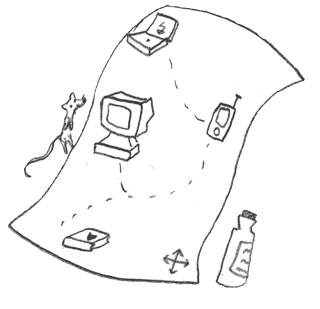In the face of mounting crisis – social breakdown, political polarization, ecological collapse – many people turn inward. And in this turn, they mistake passivity, irony and detachment for resistance. But hopelessness is not radical, it’s deeply conservative. It says: “Nothing can change.” “Everything is corrupt.” “Why bother?”
This isn’t rebellion, it’s surrender. And it’s the exact emotional state that power systems – what we call the #deathcult of neoliberalism – need us to be in. It feeds on your hopelessness, it wants your sarcasm, it loves that you’re “above it all.”
Meme culture & irony: Subversion or sedation? What started as absurdist and ironic commentary devolves into a feedback loop of reaction over reflection. Sarcasm and irony dominate, and this can be useful satire, but more often it’s deflection. You’ll see it in:
The snide quote-tweets with no solution.
The endless “vibes” critiques in social threads.
The collapse of political dialogue into aesthetics and shitposting.This “cool detachment” doesn’t move us any were toward change, it actively blocks it. We saw this in the decline of many #Occupy offshoots, where internal meme culture replaced organising. Or more recently in parts of climate circles, where #doomposting pushes people into nihilism instead of movement.
Inward-looking tribalism in a globalising world, the creeping tribalism of identity performance, the tendency to build ever-smaller circles of agreement and define yourself against the world instead of with it. On the surface, this might seem like radical rejection of the #mainstreaming. But it’s the opposite, a deeply conforming reaction to consumer individualism.
“Build your brand.”
“Curate your followers.”
“Find your niche.”
“Be your own revolution.”This is #stupidindividualism, a self-defeating survival mode learned from decades of #neoliberal collapse. But there is no individual path through #climatechaos, only collective ones. We see this mess when grassroots media creators ignore collaboration and #4opens publishing, instead choosing to grow their own follower count on YouTube, TikTok or Substack. We see it when radical tech projects are siloed by pride and petty grudges, while the #dotcons eat their functionality alive.
This performative tribalism ends in isolation, not revolution. All of this is the problem, not the solution, let’s be clear:
Sarcastic detachment = stagnation.
Tribal identity wars = division.
Hopelessness = inaction.Together, they serve the status quo. They are cultural arms of the #deathcult, a system designed to:
Feed on fear.
Incentivize competition.
Reward silence over solidarity.So what is the change we need? A first step is in #KISS reviving:
- Networks of trust, not control (#4opens).
- Tools that connect, not isolate (#OMN, #OGB).
- Spaces where we speak with doubt, and listen with care.
- Structures of cooperation, not only critique (#indymediaback).
We don’t need perfect answers, we need open processes, and we need to reclaim hope, not as naïve optimism, but as active engagement. So pick up your shovel, join a group of composters, feed the soil of a future worth living in.
Hashtags are the River.

